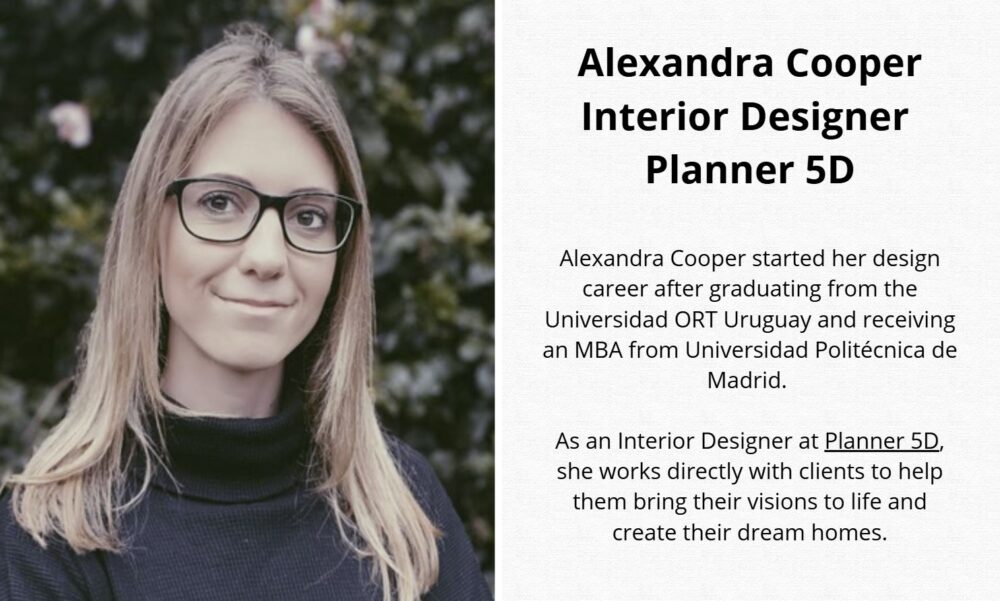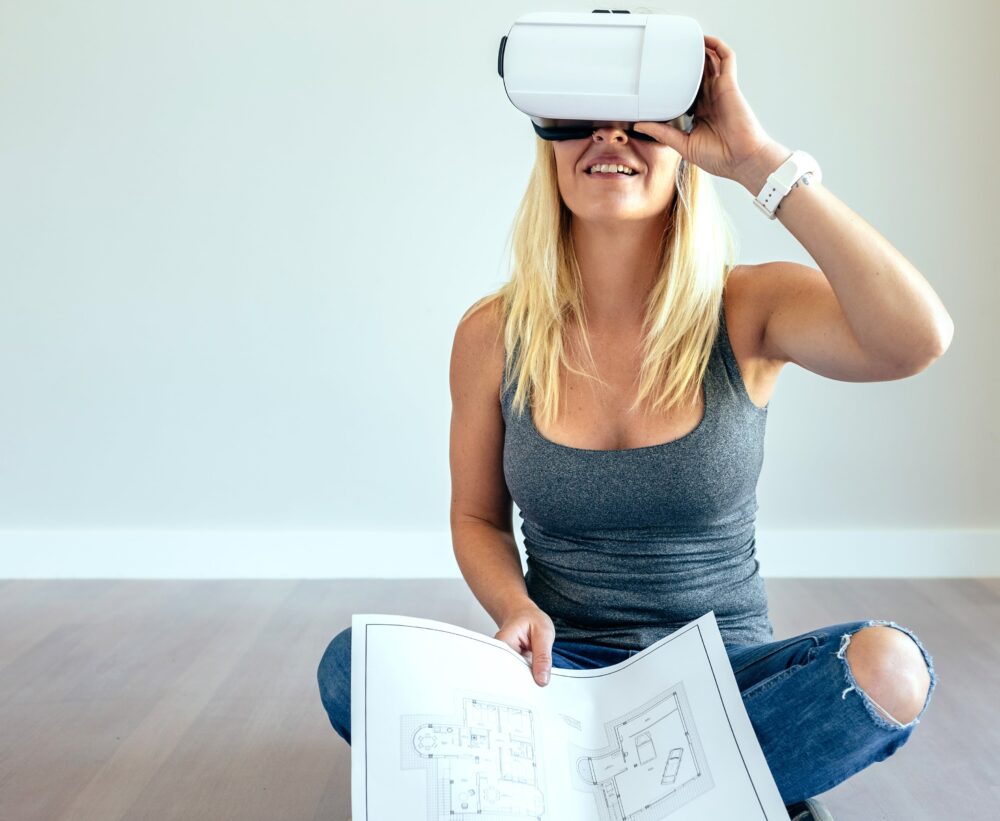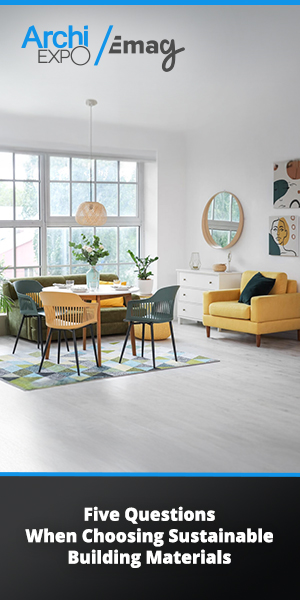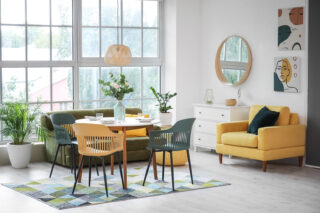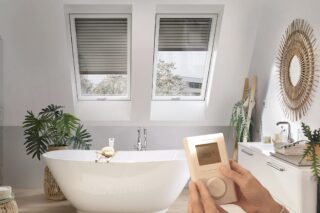This article was written by Alexandra Cooper, Interior Designer at Planner 5D.
The virtual interior design profession emerged fifteen to twenty years ago due to the rise of powerful design software and increasing internet connectivity. Yet, the major industry boom took place a few years ago as we exited the COVID scare. Despite the increase in demands, we still encounter a lot of confusion about what we do on a daily basis. Here are questions people ask that I’d like to address:
What’s the difference between a virtual and in-person interior designer? Is one better than the other? Where do I find a virtual interior designer? And my personal favorite—Are we real human beings or just AI?
Let’s dive into it.
The Difference Between Virtual and In-person Interior Designers
The biggest difference between virtual and in-person interior designers is how we work. As the name suggests, we work 100% virtually, only online. Everything regarding client meetings, site visits, and more is extremely different because we are not physically there. Given this distance, we work very closely alongside the client because we depend on them to provide the information we need to see out our projects. This collaborative relationship requires a lot of teamwork, and we have to be very specific in what we ask them to share with us. We don’t want them to do more work than needed, so it’s crucial to provide clear instructions about which measurements and floor plans we need. Clients who prefer to be fully involved and invested appreciate this kind of relationship, compared to having their hands held blindly by an in-person interior designer.
One of the biggest perks of hiring a virtual interior designer is flexibility. We can arrange calls anytime, and we can communicate through a variety of channels – phone, messages, and email. Virtual interior designers are great for people with busy schedules as they can take a call during their commute, in between dropping their kids off at school, and during household chores, because all they need to do is have a signal on their device. They save time by not having to physically show up to an appointment somewhere across town. Flexibility also in the sense that you are not solely limited to local designers. Instead, you can choose a designer from anywhere in the world, which gives you greater pricing, availability, and style options.
You’ll also receive your initial drafts from virtual designers in a much shorter time frame compared to in-person designers because virtual designers work at a faster pace. This is due to the nature of our roles. As a virtual designer, I spend 100% of my day sitting in front of my computer. I’m able to juggle more projects at the same time. While I’m managing 10, an in-person designer is jumping between 2-3, depending on the stage of the project. This is because they are constantly on the move – going to retailers, getting samples, going to appointments with clients.
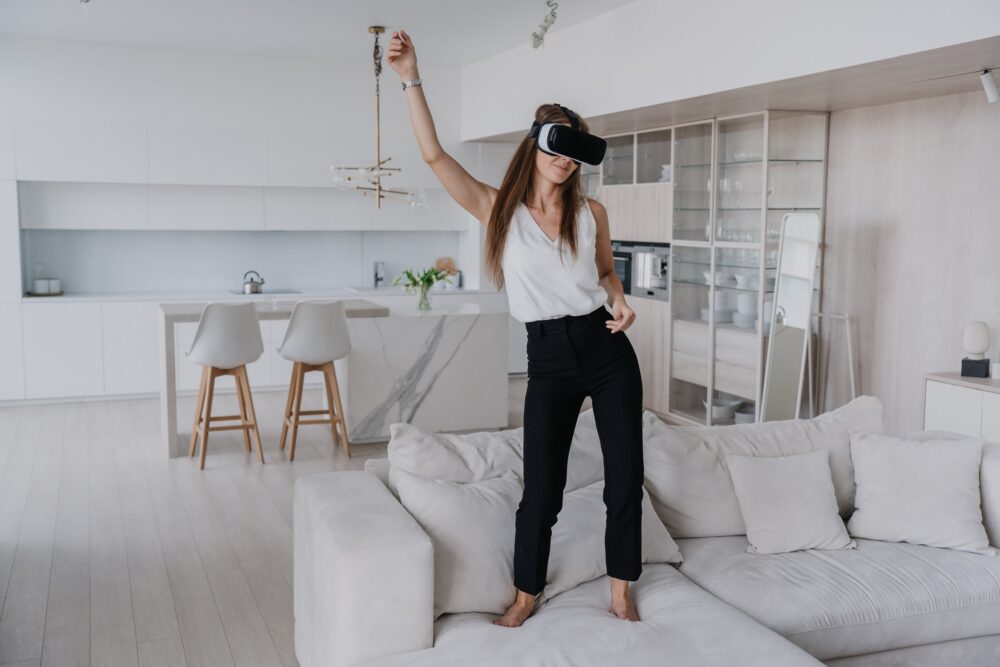
How Do Virtual Interior Designers Adapt To the Simplicity of In-person Work?
Being in the same room as the client does make many things simpler. They can feel the texture of a couch sample with their own two hands and see the paint options of the room up close. However, given the advancements in technology, we are also able to convey our visions. Virtual interior designers use a ton of online tools and software. We have to be able to show what we want to achieve and provide explanations through our choices through virtual tools like 3D modeling, 3D rendering, and mood boards. We rely on platforms like Planner 5D, HomeByMe, Coohom, SketchUp, Design Files, and Autocad to do this. While it’s not to say in-person designers don’t also utilize these platforms, their time is spent divided on many other tasks and they have less time on a computer to practice.
Once we use these tools and give our deliverables to our clients, our job is typically done. Unlike in-person interior designers, we don’t stay with the client until the completion of their project. They take our renderings, for example, and source the furniture or materials themselves or with the help of a contractor. While some clients desire the sense of security an in-person designer requires, the amount they would save sometimes is more important – thousands of dollars versus a couple of hundred. It all depends on the individual client and what they value. Being more involved and saving a significant amount of money, or putting full trust in your designer and not wanting to be bothered as often.
While some virtual interior designers may not be physically present for the final stages of a project (though some do offer furniture sourcing and delivery), it’s not uncommon for clients to seek their expertise again, either to review progress or to address unforeseen challenges that arise during construction. I’ve had a few sneaky pipes discovered over the years that have caused me to rearrange the layout of clients’ rooms.
So, while I can’t shake your hand, trust me – we’re real! Our portfolios showcase our success stories and previous projects. Like in-person designers, our bios let you check out our qualifications. And we’re always happy to have an intro call to get to know each other before you make your decision. Hiring a designer is personal. And at the end of the day, whether in-person or virtual, what matters more is choosing someone who is the right fit for you and your vision.
